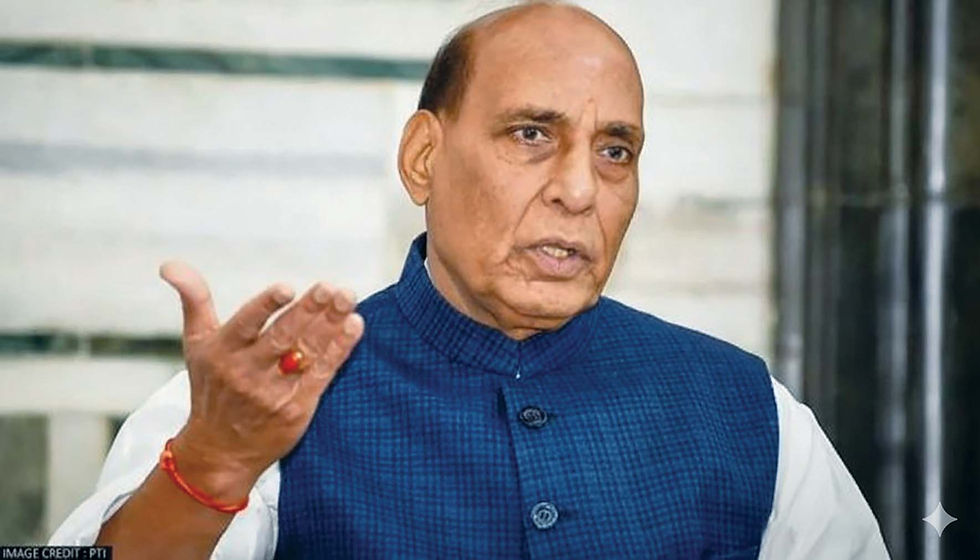Directorate General of Civil Aviation or Distress Gripping Civil Aviation?
- Commodore S.L. Deshmukh

- Jun 30
- 4 min read
India’s aviation regulator, which is supposed to act as a pillar of flight safety, faces serious turbulence of its own making.

Few institutions in India are as critical to public safety and as overlooked as the Directorate General of Civil Aviation (DGCA). Established in 1946 and made a statutory body in 2020, the DGCA is the country’s primary civil aviation regulator. Its remit includes everything from licensing pilots and certifying aircraft, to investigating crashes and enforcing airworthiness standards. Yet, despite its centrality to India’s growing aviation ecosystem, the regulator appears increasingly adrift. In the context of the horrific AI171 crash which led to the loss of over 270 lives, lapses in oversight, understaffing and a reactive approach to crises have raised the troubling prospect that the very agency entrusted with keeping India’s skies safe may itself be in need an emergency landing.
India’s booming aviation sector— the third-largest domestic market in the world—is outgrowing the DGCA’s operational and institutional capacities. While the skies are busier than ever, the regulator appears stuck on the tarmac. A growing chorus of aviation experts, pilots, and safety consultants are voicing concern that the DGCA is failing to meet even minimum global safety standards. Recent incidents, ranging from runway misidentifications to pilots exceeding duty time limits, point to systemic failings in regulatory enforcement.
A key concern is the DGCA’s waning ability to conduct effective oversight. It has been routinely criticised for its lack of robust auditing systems, which has compromised the quality and frequency of safety inspections. Where agencies such as the US Federal Aviation Administration (FAA) or the European Union Aviation Safety Agency (EASA) deploy data-driven oversight models, India’s DGCA appears stuck in an older, reactive paradigm, intervening only after incidents occur, rather than preventing them through predictive systems.
One area where this failure is especially visible is fatigue management. Ultra-long-haul flights, growing pilot shortages and ambitious flight schedules have placed an extraordinary burden on flight crews. Yet, DGCA enforcement of Flight Duty Time Limitations (FDTL) remains lax. Airlines continue to exploit grey zones, occasionally deploying fatigued pilots, while the regulator struggles to ensure compliance. The results are chilling: fatigued flight crews making critical errors, a sharp rise in runway incursions, and incomplete pre-flight safety checks.
Structural issues within the DGCA are equally pressing. It remains chronically understaffed, with a shortage of technical personnel able to conduct safety audits and assessments. The existing staff, already overstretched, operate under a regulatory framework burdened by bureaucracy and antiquated rules. In some instances, aircraft have been flown without undergoing mandatory inspections, or crews deployed without proper licensing verifications—failings which are hard to excuse in a country that aspires to be a global aviation hub.
Then there is the matter of leadership. For an agency tasked with regulating a technically complex and fast-evolving sector, the DGCA has historically been headed not by aviation professionals but by bureaucrats from unrelated services. This lack of domain knowledge at the top has hobbled the organisation’s ability to modernise and assert authority over airlines increasingly driven by bottom lines. It has also weakened the DGCA’s ability to push back against non-compliant carriers.
The answer lies in urgent structural reform. First, the DGCA needs to be transformed into a genuinely autonomous and technically competent institution. Its leadership should be drawn from seasoned aviation professionals with experience in global best practices. The agency should be restructured along the lines of the FAA or EASA, with statutory independence and sufficient budgetary allocations to recruit and train technical experts.
Second, its monitoring systems need an upgrade. Data-driven tools such as Flight Operational Quality Assurance (FOQA) programs and real-time aircraft health monitoring must become standard. These tools can flag irregularities such as hard landings, unusual engine behaviour or erratic pilot inputs long before they result in disaster.
Third, enforcement needs to be proactive and preventive, not reactive. Routine and surprise inspections must become the norm, including night-time spot checks and full-spectrum audits of crew readiness, aircraft airworthiness, and operational protocols. Airlines found violating safety norms must face swift penalties—not merely token reprimands.
Pilot training and crisis simulation drills must be standardised and enhanced. As the aviation sector expands, crisis preparedness must keep pace. India needs more frequent simulated emergency exercises to improve real-time coordination and decision-making under pressure.
Transparency, too, must be a guiding principle. For years, the DGCA has functioned behind closed doors, with little public accountability. That must change. Safety audit findings, enforcement actions, and the outcomes of crash investigations should be made public in a timely and accessible manner. Doing so will build trust not just among passengers, but also within the aviation industry itself.
Reform will not come easily. India’s aviation sector is characterised by fierce competition, thin profit margins, and powerful private players with deep political ties. But the price of inaction is far too steep. Every regulatory lapse risks not only human life but also India’s credibility as a safe aviation destination. A single catastrophic accident—brought about by carelessness or neglect—could undo years of progress and send shudders through the entire industry.
In the words of Captain Alfred Gilmer Lamplugh, a British aviation pioneer: “Aviation in itself is not inherently dangerous. But to an even greater degree than the sea, it is terribly unforgiving of any carelessness, incapacity or neglect.” The DGCA would do well to heed this warning. Because in aviation, unlike in other sectors, failure is not an option. It is a tragedy waiting to happen.
(The writer is a retired naval aviation officer and a defence and geopolitical analyst. Views personal.)





Comments